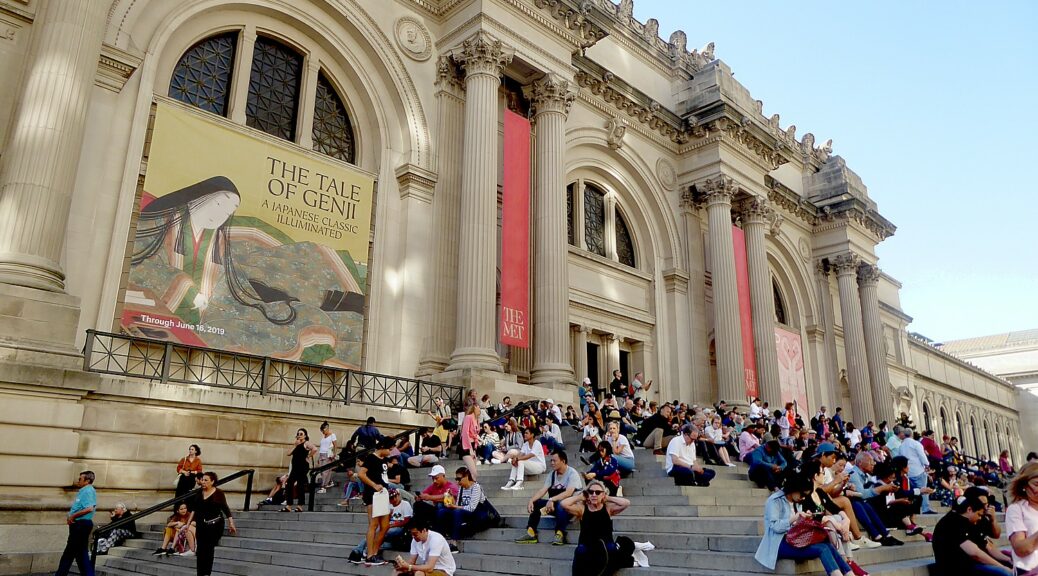
by Karen Rubin, Travel Features Syndicate, goingplacesfarandnear.com
The Global Scavenger Hunt teams arrive in New York City for the last leg of the Global Scavenger Hunt, a mystery tour that has taken us to 10 countries in 23 days.
Bill Chalmers, the ringmaster and Chief Experience Officer of this around-the-world mystery tour, has designed the rules, challenges and scavenges to get us out of our comfort zone and immerse us in a culture, fine-tune our skills as world travelers, and most significantly, “trust in the kindness of strangers.”
Back in New York, he is delighted all 10 teams circumnavigated the world “in one piece” without dramatic incident, in this, the 15th annual Global Scavenger Hunt competition.
There is one more challenge in New York (an easy urban Par 1), and even though, based on points and placement, the winners of the 15th annual, 2019 edition of the Global Scavenger Hunt have been determined, still the teams go out and give it their all. The four teams still in contention must complete at least one of the scavenges in New York, and complete their time sheet and hand in by the 4 pm deadline.
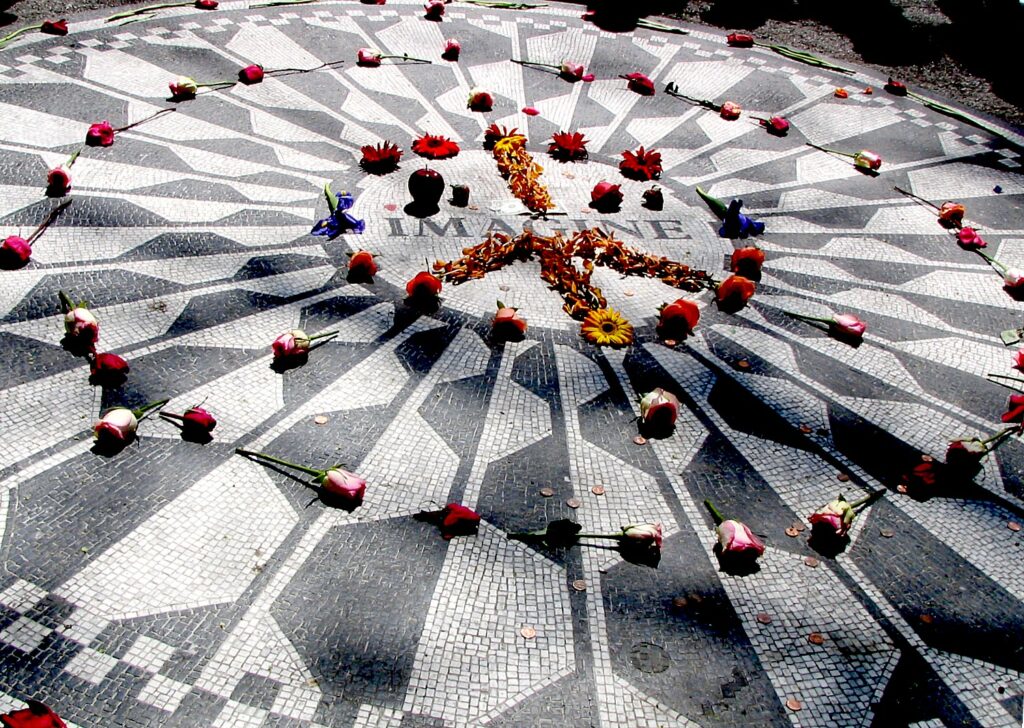
Examples of the scavenges: take in a Yankees game or a Broadway show (actually difficult because of the deadline of 4 pm); have one of each of following: a New York bagel, a New York hot dog, a New York deli sandwich, a slice of New York pizza, New York cheesecake, a New York egg cream, or an old-fashion Manhattan; locate five pieces from five of the nations you just visited in the Met; visit Strawberry Fields to pay John Lennon tribute; do one scavenge in each of the five boroughs of New York City.
A native New Yorker, this is really my turf, though there is the oddest sensation of feeling like I am in a foreign place, reminding myself of what is familiar and not having to think twice about things like language, currency, drinking water from the tap, eating raw vegetable, the street grid).
In fact, that is the genius of the way the Global Scavenger Hunt is designed – we are supposed to feel off-balance, disoriented because that’s when you focus most, the experiences are more intense, you are out of your comfort zone and need to rely on the kindness of strangers, as opposed to the style of travel where you stay long enough to become familiar, comfortable in a place so it (and you) no longer feels foreign.
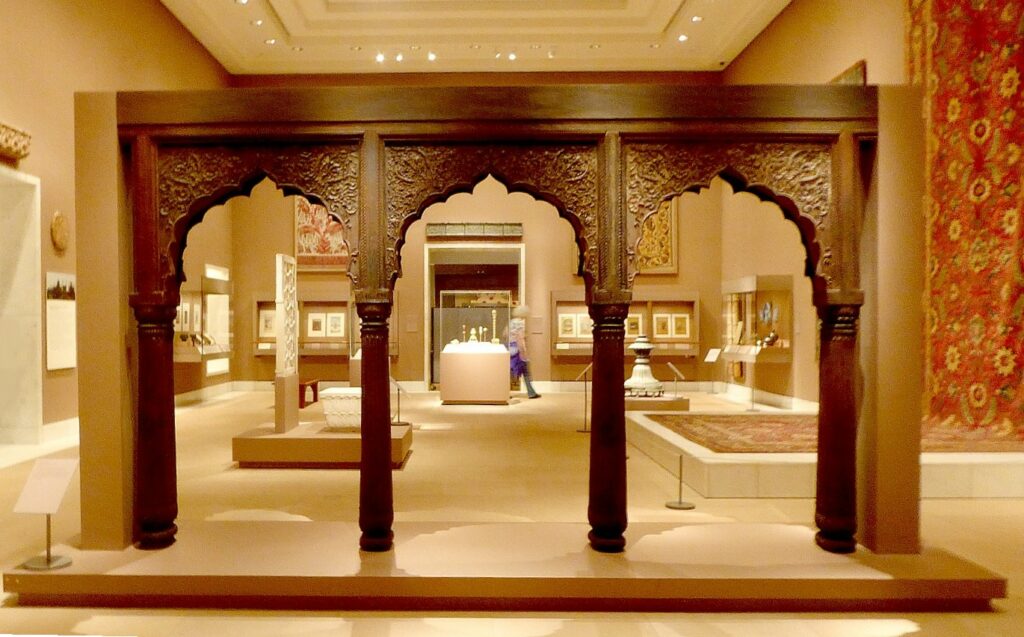
I elect to take up the challenge of going to the Metropolitan Museum of Art to seek out objects from five of the countries we visited (Canada, Vietnam, Myanmar, Thailand, Abu Dhabi, Jordan, Greece, Morocco, Gibraltar, Portugal, Spain). Greece will be easy, of course, but Morocco and Jordan (Petra), Vietnam and Myanmar (Burma) are trickier. It is Chalmers’ way of making us experience things on a different level, and for me, it brings together so much of what we’ve seen, learned and experienced along the way. I have a context in which to appreciate the artifacts, dare I say a personal connection. Indeed, the Metropolitan Museum of Art enables you to travel around the world, be transported over millennia, within the confines of its walls.
I first join a docent-led Highlights Tour, knowing from past experience that these always lead me to parts of the museum I am unfamiliar with, and enlighten me about aspects of art and culture with the in-depth discussion of the pieces the docents select to discuss.
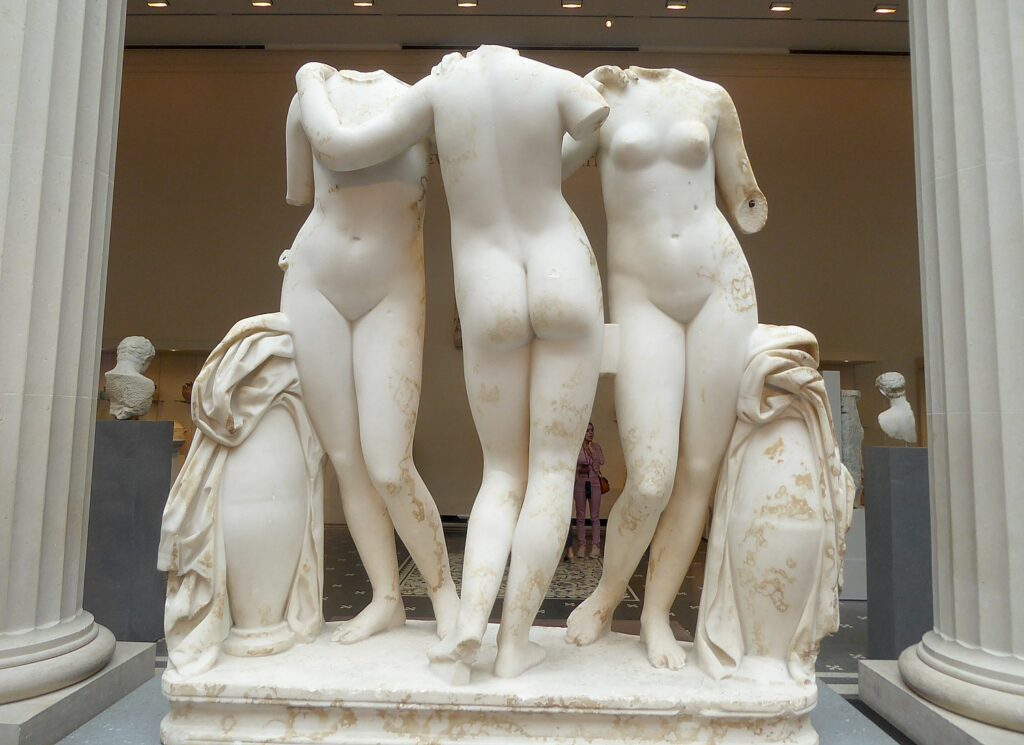
The docent, Alan, begins in the Greco-Roman exhibit with a stunning marble sculpture of the Three Graces, showing how this theme – essentially copied from the Greek bronzes (which no longer exist because the bronze was valuable and melted down for military use) – was repeated over the eons, into the Renaissance and even beyond. Greece. One down.
Obviously, finding an object from Greece would be easy, and I hope to find objects from Vietnam, Myanmar (Burma), and Thailand in the Asia wing where there is a massive collection of Buddhist art (it proves just a tad more difficult, but I succeed).
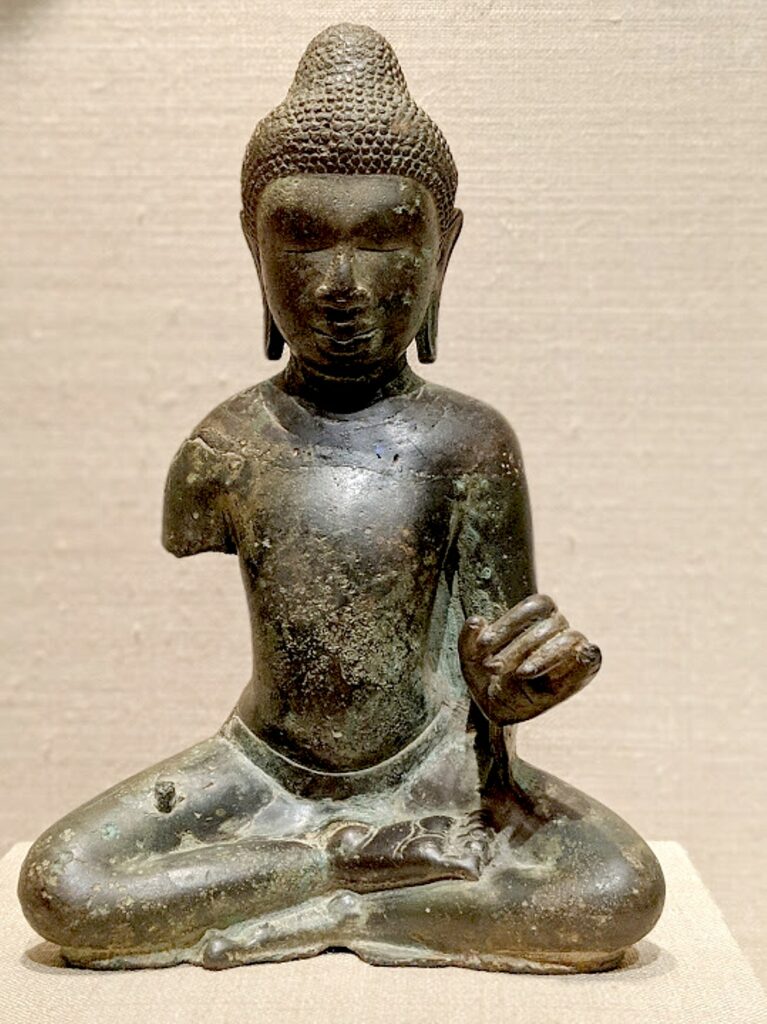
Morocco and Jordan (Petra) prove trickier than I expected, but bring me to an astonishing, landmark exhibit, “The World Between Empires: Art and Identity in the Ancient Middle East,” with an extraordinary focus on the territories and trading networks of the Middle East that were contested between the Roman and Parthian Empires (ca. 100 BC and AD 250) “yet across the region life was not defined by these two superpowers alone. Local cultural and religious traditions flourished and sculptures, wall paintings, jewelry and other objects reveal how ancient identities were expressed through art.”
This is a goldmine for my hunt. Featuring 190 works from museums in the Middle East, Europe and the United States, the exhibition follows the great incense and silk routes that connected cities in southwestern Arabia, Nabataea, Judea, Syria and Mesopotamia, that made the region a center of global trade along with spreading ideas, spurring innovations (such as in water control), and spawning art and culture. It is a treasure trove for my scavenger hunt.
It is the most incredible feeling to come upon the objects from Petra, having visited the site (was it only 10 days ago?) and having a context for seeing these isolated objects on display. I recall seeing their counterparts in the newly opened Archaeological Museum at Petra.
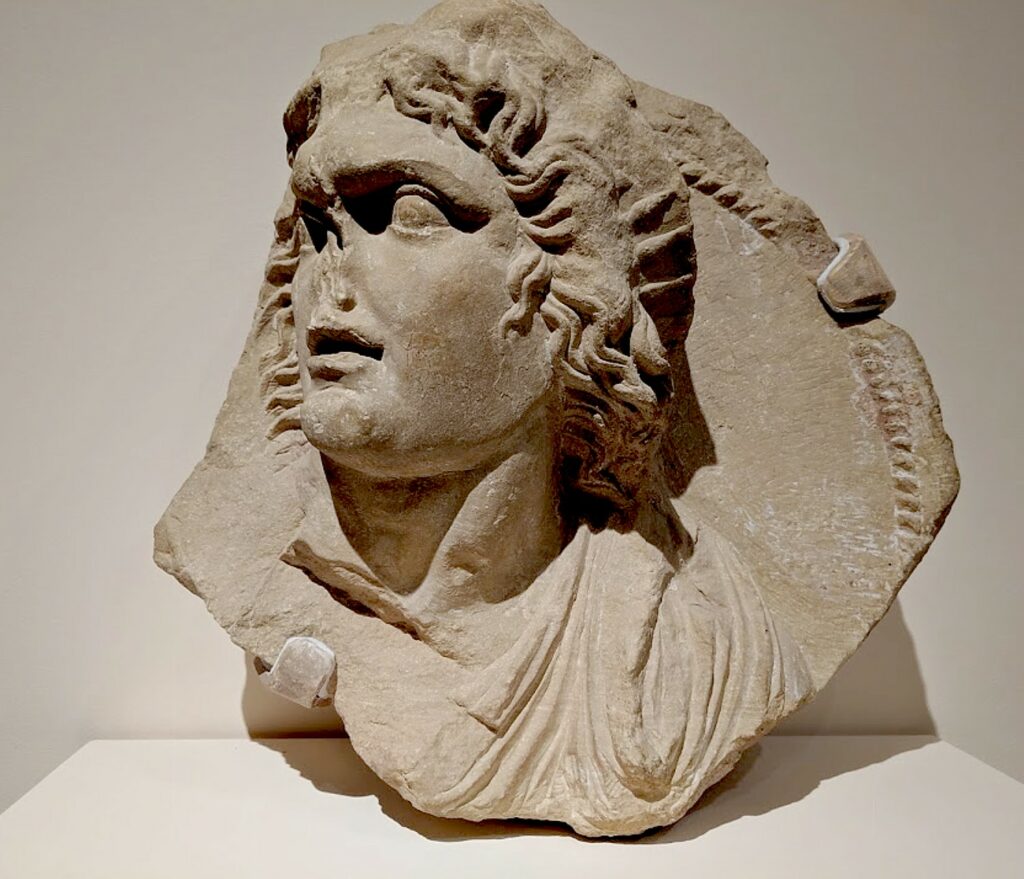
The World Between Empires
The landmark exhibition The World between Empires: Art and Identity in the Ancient Middle East (unfortunately it is only on view through June 23, 2019), focuses on the remarkable cultural, religious and commercial exchange that took place in cities including Petra, Baalbek, Palmyra and Hatra between 100 B.C. and A.D. 250. “During this transformative period, the Middle East was the center of global commerce and the meeting point of two powerful empires—Parthian Iran in the east and Rome in the west—that struggled for regional control.”
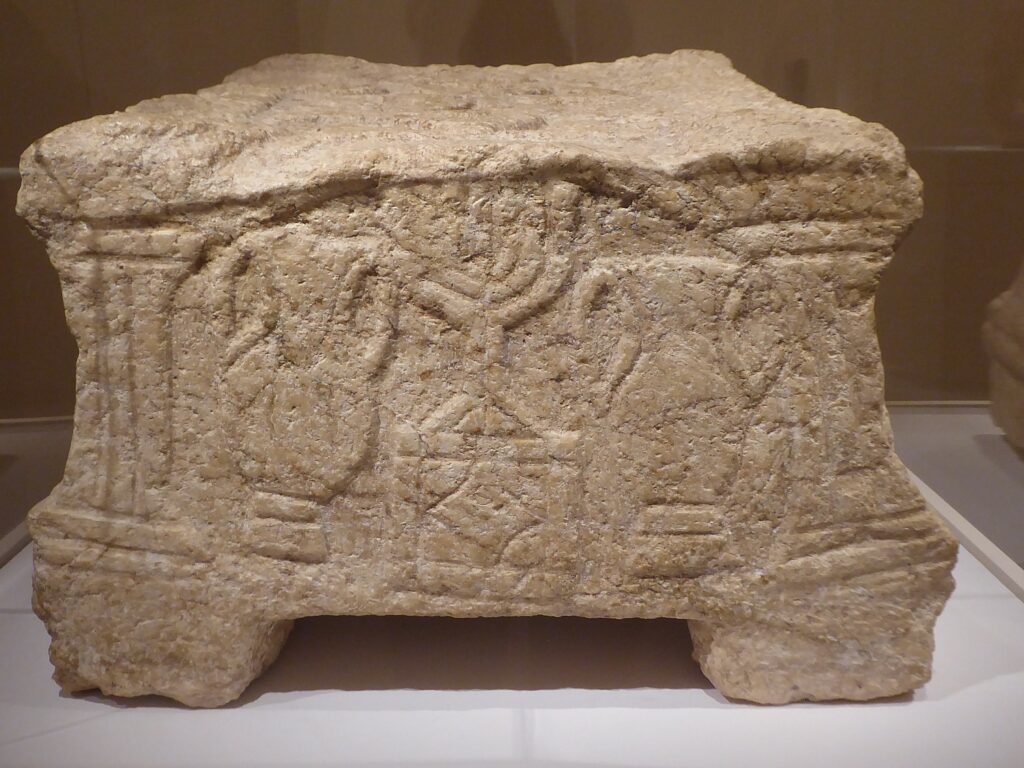
Among the highlights is a Nabataean religious shrine, reconstructed from architectural elements in collections in the United States and Jordan; the unique Magdala Stone, discovered in a first-century synagogue at Migdal (ancient Magdala) with imagery that refers to the Temple in Jerusalem; and wall paintings from a church in Dura-Europos that are the earliest securely dated images of Jesus.
Sculptures from Baalbek illuminate religious traditions at one of the greatest sanctuaries in the ancient Middle East, and funerary portraits from Palmyra bring visitors face to face with ancient people. The exhibition also examines important contemporary issues—above all, the deliberate destruction and looting of sites including Palmyra, Dura-Europos, and Hatra.
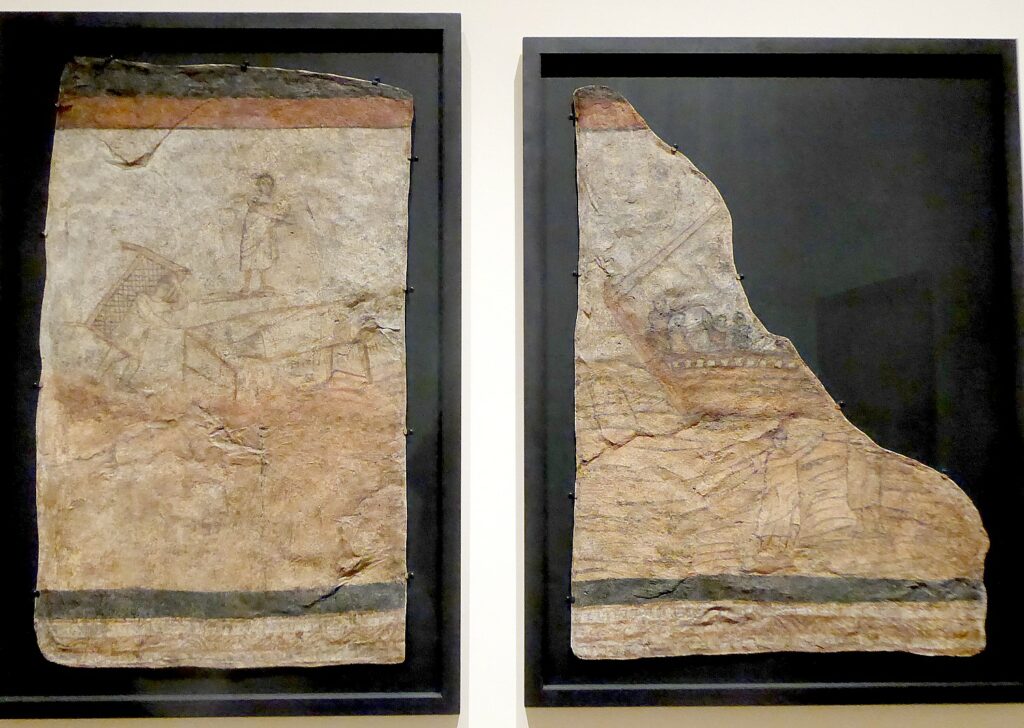
“The compelling works of art in this exhibition offer a view into how people in the ancient Middle East sought to define themselves during a time of tremendous religious, creative, and political activity, revealing aspects of their lives and communities that resonate some two millennia later,” stated Max Hollein, Director, The Metropolitan Museum of Art, in a video that accompanies the exhibit. “Further, in focusing on an area of the world that has been deeply affected by recent conflicts and the destruction of sites, monuments, and objects, this show also engages with complex questions about the preservation of cultural heritage.”
The exhibition evokes a journey along ancient trade routes, beginning in the southwestern Arabian kingdoms that grew rich from the caravan trade in frankincense and myrrh harvested there and used throughout the ancient world. Camel caravans crossed the desert to the Nabataean kingdom, with its spectacular capital city of Petra, which I have just visited, walking through very much as the caravan travelers would have.
From here, goods traveled west to the Mediterranean and north and east through regions including Judaea and the Phoenician coast and across the Syrian desert, where the oasis city of Palmyra controlled trade routes that connected the Mediterranean world to Mesopotamia and Iran and ultimately China. In Mesopotamia, merchants transported cargoes down the Tigris and Euphrates rivers to the Persian Gulf, where they joined maritime trade routes to India. These connections transcended the borders of empires, forming networks that linked cities and individuals over vast distances.
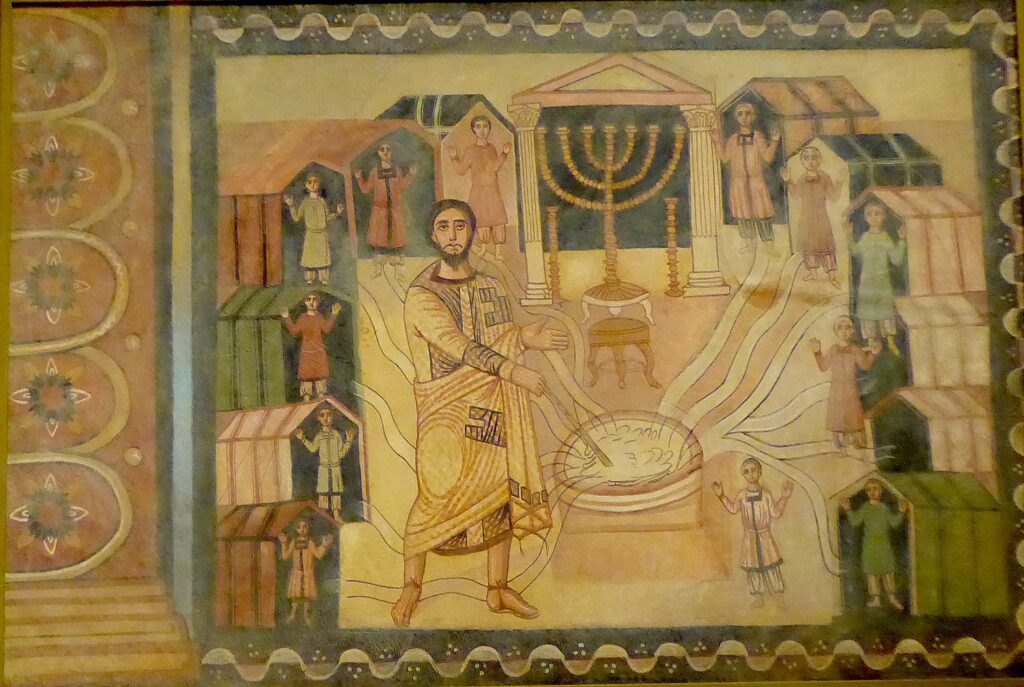
“Across the entire region, diverse local political and religious identities were expressed in art. Artifacts from Judaea give a powerful sense of ancient Jewish identity during a critical period of struggle with Roman rule. Architectural sculptures from the colossal sanctuary at Baalbek and statuettes of its deities reveal the intertwined nature of Roman and ancient Middle Eastern religious practices. Funerary portraits from Palmyra represent the elite of an important hub of global trade. Wall paintings and sculptures from Dura-Europos on the River Euphrates illustrate the striking religious diversity of a settlement at the imperial frontier. And in Mesopotamia, texts from the last Babylonian cuneiform libraries show how ancient temple institutions waned and finally disappeared during this transformative period.”
From my visits in Athens and Petra, particularly, I appreciate this synergy between trade, migration, environmental sustainability and technology (in Petra’s Archaeology Museum, you learn how the ability to control water supply was key to the city’s development) and the links to economic prosperity and political power, and the rise of art, culture, and community. (I recall the notes from the National Archaeology Museum in Athens that made this very point.)

It is rare (if ever) for the Metropolitan Museum to venture into the political, but a key topic within the exhibition is the impact of recent armed conflicts in Iraq, Syria, and Yemen on archaeological sites, monuments, and museums, including deliberate destruction and looting. Some of the most iconic sites affected—Palmyra, Hatra, and Dura-Europos—are featured in the exhibition, which discusses this damage and raises questions regarding current and future responses to the destruction of heritage. Should the sites be restored or will they now only exist “on paper”? How much money and resources should go to restoring or excavation when villages and homes for people to live in also need to be rebuilt?
There is a fascinating, if frantic, presentation of three archaeologist/historians speaking about what the destruction by ISIS and Islamic fundamentalists of Palmyra, Eura-Europos and Hatra – what it means to destroy a people’s heritage, their cultural identity. “It may seem frivolous to focus on [archaeological sites] when people are enslaved, killed…but to wipe out, destroy culture is a way of destroying people.”
Happening upon this exhibit made the travel experiences we had to these extraordinary places all the more precious.
It is a humbling experience, to be sure, to go to the origins of the great civilizations, fast forward to today. How did they become great? How did they fall? Greatness is not inevitable or forever. Empires rise and fall. Rulers use religion, art and monuments to establish their credibility and credentials to rule; successors blot out the culture and re-write history.

I peek out from the American Café windows to Central Park and see sun and the early spring blossoms on the trees, and dash out to walk through my other favorite New York City place. There is nothing more beautiful than New York City in the spring – brides are out in force taking photos; there are musicians and entertainers. There is a festive atmosphere as I walk through the park toward the Palace Hotel in time for our 4:30 pm meeting.
Plan your visit and get information on current exhibits, www.metmuseum.org.
Plan your visit to New York City, www.nycgo.com.
15th Annual Global Scavenger Hunt Winners Crowned
And now, drumroll please, Chalmers announces the winner of the 2019 Global Scavenger Hunt: “Only one team wins. The competition was fierce.”
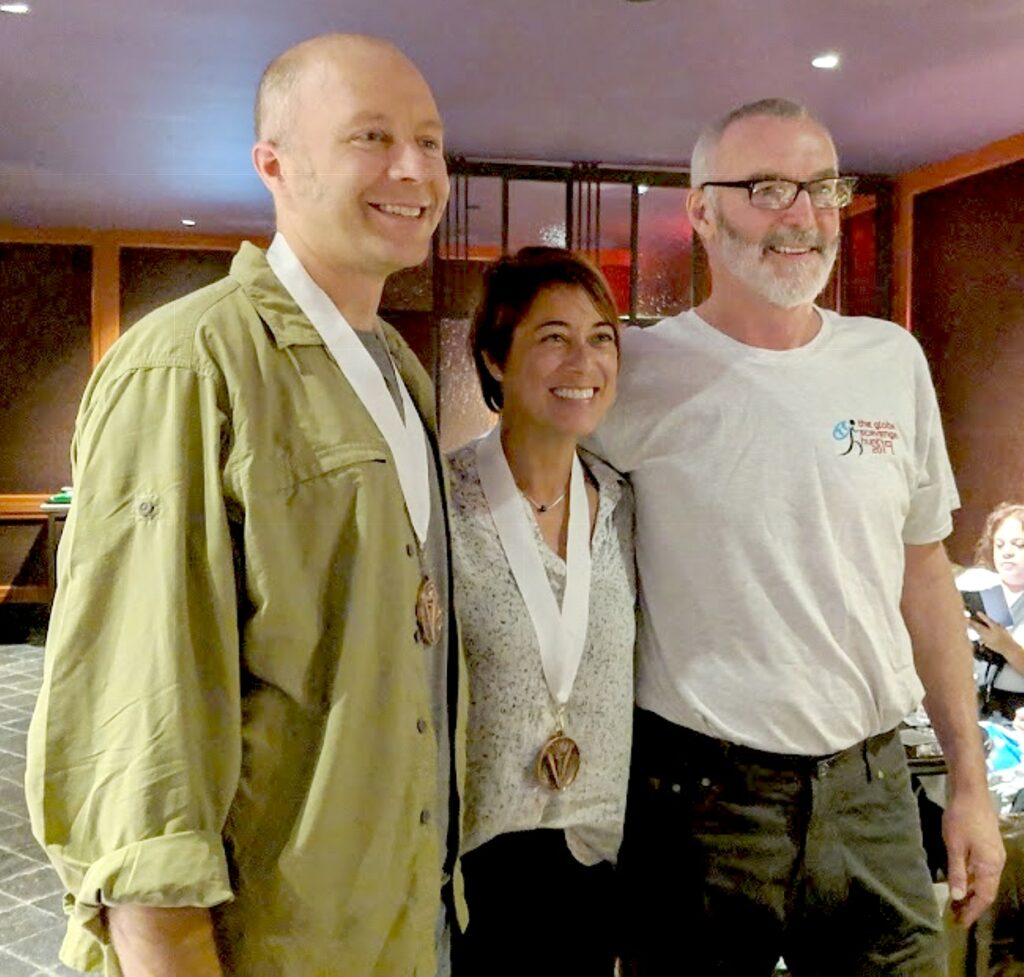
In third place is Order & Chaos, Sal Iaquinta & Vivian Reyes, doctors from San Francisco.
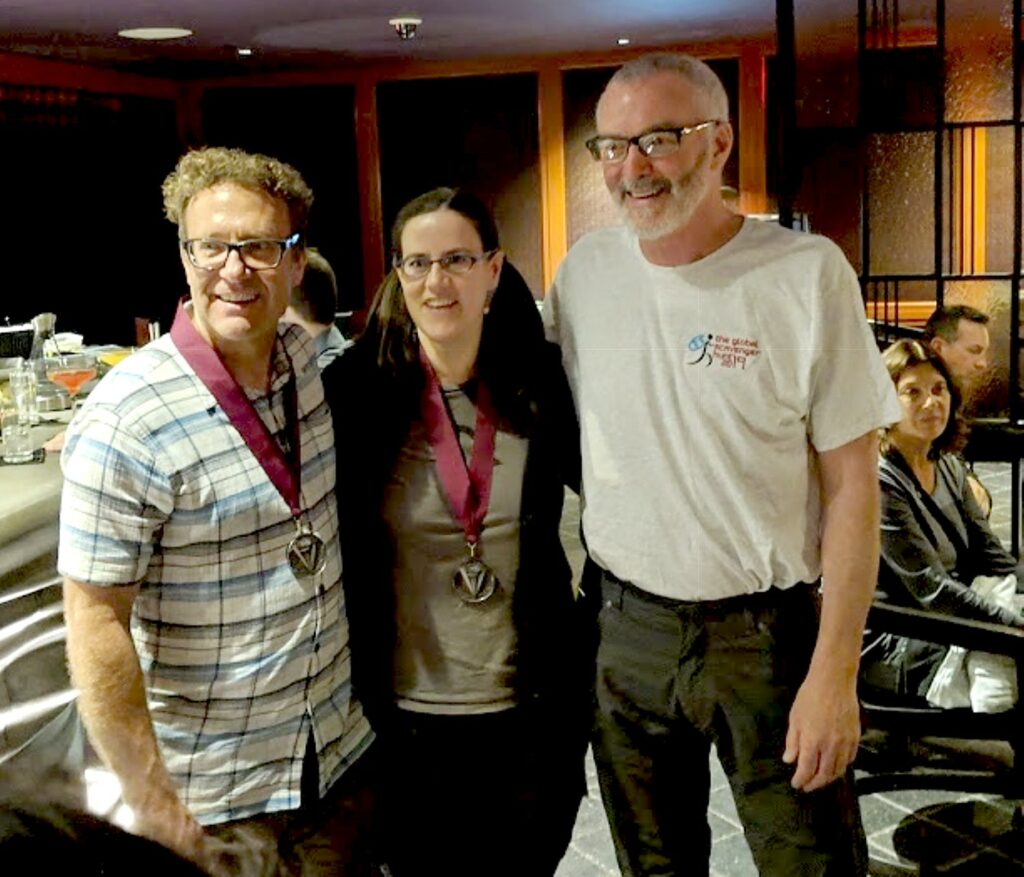
In second place, Lazy Monday, Eric & Kathryn Verwillow, computer networking and think tank professional of Palo Alto, California “I am in awe of how hard working, beginning to end – embracing the spirit,” Chalmers says.
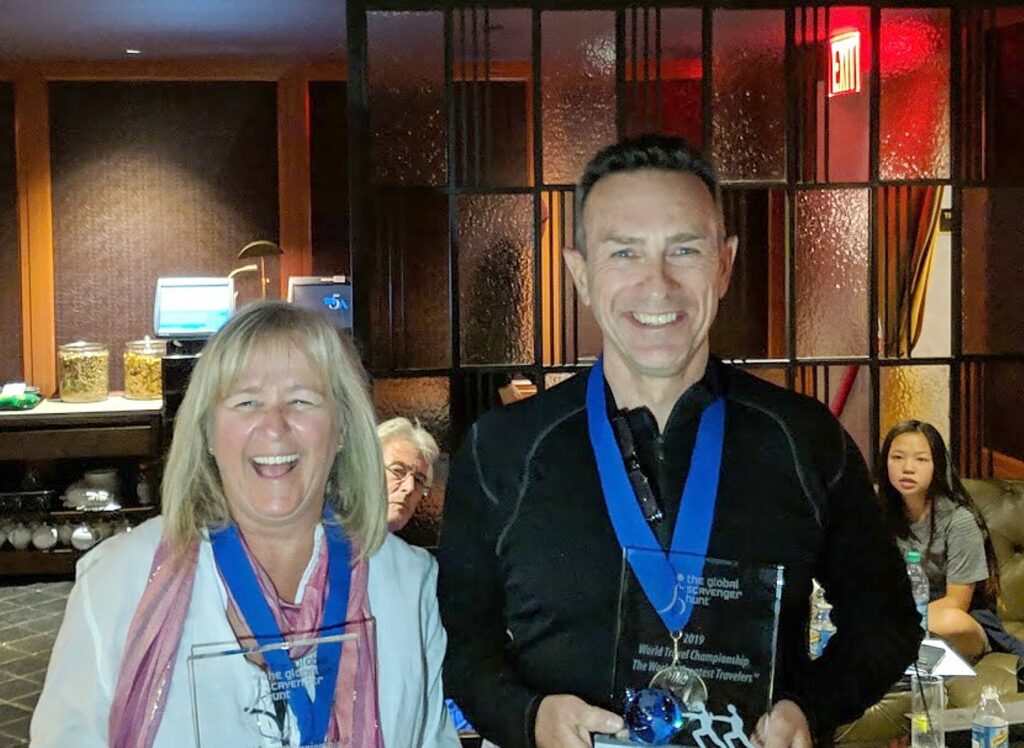
And the World’s Greatest Travelers of 2019: Lawyers Without Borders, Rainey Booth and Zoe Littlepage of Houston, who have competed in the Global Scavenger Hunt 12 times, and win it for their 6th time. “You embody the spirit of the event, to go out of your comfort zone.” (You can follow Zoe’s blog of her experience to get a sense of how strenuous, outrageous, and determined the team was in accumulating their points: https://zoeandraineygreatescape.blogspot.com/2019/05/gsh-2019)
We celebrate at a final bon voyage dinner.
The Global Scavenger Hunt is the brainchild of Bill and Pamela Chalmers, who in addition to forging understanding and bonds among travelers and the people in the destinations visited, use the program to raise money for the GreatEscape Foundation and promote voluntourism – one of the scavenges in Yangon, Myanmar is to volunteer at an orphanage or school; past GSH travelers visited and helped out at Tibetan refugee camps in Nepal, orphanages in Laos, hospitals in Cambodia, homeless schools in India, hospices in Manila, disabled facilities in Sri Lanka, Ethiopian schools, the slums of Nairobi.
“The foundation is one of main reasons we do the event,” Chalmers says at our final meeting before going out for a celebration dinner. The foundation has raised money to build 12 schools (1 each in Niger, Haiti, Ecuador, India & Ethiopia; 2 each in Sri Lanka & Sierra Leone, and 3 in Kenya), helped build the Tamensa Medical Clinic in Niger for migrating Tuareg nomads which serves as a midwives & nurse training center too. “We know that we saved lives and bettered the lives of hundreds. We have helped over 2400 families in more than 60 countries (mostly women entrepreneurs) with our interest and fee free micro-loans (96% of which have gone to women with a 99% repayment).”
Through the event this and last year, the foundation will build 2 more co-ed elementary schools , in Ethiopia and Haiti.
2020 Global Scavenger Hunt Set for April 17-May 9
Chalmers has just set the dates for the 23-day 2020 Global Scavenger Hunt: April 17-May 9, 2020. Entry applications are now being accepted.
Eager Indiana Jones-types of adventurers and curious travelers wanting to test their travel IQ against other travelers in an extraordinary around-the-world travel adventure competition that crowns The World’s Greatest Travelers, can apply at GlobalScavengerHunt.com.
The 2020 event will pit savvy international travelers against each other by taking them on A Blind Date with the World, visiting ten secret destinations without any prior preparation, and then have them unravel a constant blitz of highly authentic, participatory and challenging culturally-oriented scavenges along the way, like: meditating with monks, training elephants, taking flamenco lessons, cooking local dishes with local chefs, searching out Lost Cities, cracking sacred temple mysteries, joining in local celebrations, and learning local languages enough to decipher their scavenger hunt clues. Trusting strangers in strange lands will be their focus as they circle the globe for three weeks. Over the past 15 years, the event has touched foot in 85 countries.
The title of The World’s Greatest Travelers and free trip around the world to defend their titles in the 2021 event await the travelers worthy enough to win the 16th edition of the world travel championship.
Event participation is open but limited; the $25,000 per team entry fee includes all international airfare, First Class hotels, 40% of meals, and special event travel gear. All travelers are interviewed for suitability and single travelers are welcome to apply. For additional information visit GlobalScavengerHunt.com, or contact GreatEscape Adventures Inc. at 310-281-7809.
_____________________________
© 2019 Travel Features Syndicate, a division of Workstyles, Inc. All rights reserved. Visit goingplacesfarandnear.com, www.huffingtonpost.com/author/karen-rubin, and travelwritersmagazine.com/TravelFeaturesSyndicate/. Blogging at goingplacesnearandfar.wordpress.com and moralcompasstravel.info. Send comments or questions to [email protected]. Tweet @TravelFeatures. ‘Like’ us at facebook.com/NewsPhotoFeatures
